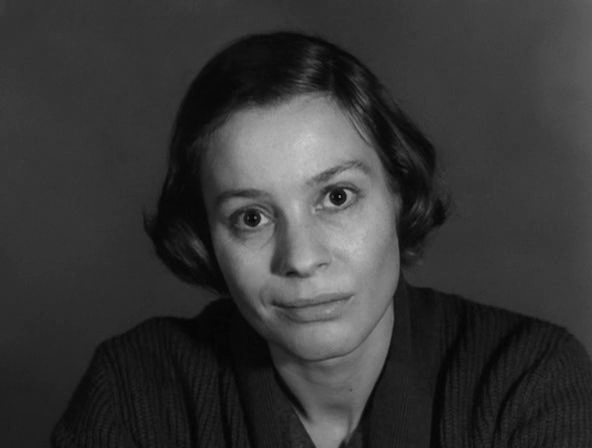 |
| Not quite as epic, is it? |
Recently, I've seen two films that rely heavily on aspect ratios. These are Michelangelo Antonioni's L'avventura and Ingmar Bergman's Winter Light. Though these movies differ greatly, they share an important device: noncommunication and framing.
 |
| L'avventura - These two are in love, apparently. |
 |
| Winter Light - These two are also in love, apparently. |
This is where the aspect ratios come in. L'avventura is shot in a widescreen 1.77:1. The huge width gives Antonioni much more space than a classic ratio, and when frames his uncommunicative characters, they are often physically distant. They shout from different planes, across the frame, separated by screen space and
boredom. Winter Light on the other hand, is in a much smaller, nearly-square 1.33:1. Bergman uses this to
his advantage with claustrophobic two-shots. Characters are squeezed so close together you wonder how they could possibly ignore each other; they're practically breathing down each other's necks.
This climaxes when Ingrid Thulin gives a six-minute long speech directly to the camera, in one uncut close-up, without blinking. In 1.33:1, she fills the entire screen, and Bergman uses this to contrast the rest of the the film's hesitant dialogue. It is shocking; the pastor, who has refused to look at her, is finally forced to listen.
 |
| Just try to ignore that face. |
Both Winter Light and L'avventura, in all their existential fear and boredom, were released in the early 1960s. This was a time when audiences were as receptive to old narrow screens as they were to new wide ones, and Ingmar Bergman could've released Winter Light in 1.77:1 just as easily as Michelangelo Antonioni could've released L'avventura in 1.33:1. However, both directors chose their aspect ratios wisely.
In 2013, with HD sensors, digital letterboxing, and online platforms that support multiple ratios, filmmakers have these options and more. Since most of us are not making Hollywood epics, though, the Academy ratio, ultra-widescreen, and everything in between might not be so simple. Films like L'avventura and Winter Light help shed light on our options.
No comments:
Post a Comment